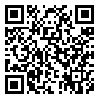BibTeX | RIS | EndNote | Medlars | ProCite | Reference Manager | RefWorks
Send citation to:
URL: http://jdisabilstud.org/article-1-3403-en.html
2- Associate Professor of Imam Khomeini International University, Qazvin, Iran
Abstract
Background & Objectives: Children with behavioral disorders display severe and socially unacceptable patterns of behavior. A persistent pattern of impulsive, defiant, and hostile behavior marks oppositional defiant disorder (ODD). In children, ODD can significantly disrupt family dynamics, particularly marital relationships. Marital intimacy, a crucial aspect of these relationships, encompasses the emotional bond, effective communication, and physical affection shared between partners. Besides marital intimacy, the emotional regulation of parents, especially mothers, is another critical factor in these families. Family cohesion is another influential element in this population and relationships. Also, family cohesion significantly influences parent–child relationship dynamics. The parent–child relationship, a distinct and vital bond, serves as the cornerstone of a child's social and behavioral development, profoundly impacting their overall well–being. This study sought to establish a structural model that investigates the relationship between family cohesion, maternal emotional regulation difficulties, and marital intimacy among mothers of children diagnosed with oppositional defiant disorder, with a specific emphasis on the mediating role of parent–child interaction.
Methods: This descriptive–correlational study utilized structural equation modeling to investigate the research questions. The study population comprised mothers of children diagnosed with ODD who were enrolled in schools located in districts 10 and 11 of Tehran City, Iran, in 2023. The selection of districts 11 and 12 was based on the approval and recommendation of the Central Department of Education of Tehran. These two districts were chosen from among the educational districts in Tehran. Following this selection, screening and selecting specific schools within districts 11 and 12 commenced. A convenience sample of 202 mothers was selected from schools in these two districts. The sample size was determined based on the rule of the number of observed variables, requiring 10 samples per variable. Given the 14 identified variables in the model, the sample size 202 slightly exceeded the minimum requirement. The study utilized the Child–Parent Relationship Scale (Driscoll & Pianta, 2011), the Family Organized Cohesiveness Questionnaire (Fisher et al., 1992), Marital Intimacy Scale (Walker & Thompson, 1983), and Emotional Regulation Difficulty Scale (Gratz & Roemer, 2004). The collected data were analyzed in SPSS version 26 and AMOS version 29. Data analysis was done using structural equation modeling. The significance level of the tests was considered 0.05.
Results: The findings revealed that family cohesion (p<0.001, β=0.55) and emotional regulation difficulty (p<0.001, β=–0.18) significantly impacted marital intimacy. Additionally, the study confirmed the significant mediating role of the parent–child relationship in the indirect relationship between family cohesion (p<0.001, β=0.238) and emotional regulation difficulty (p<0.001, β=–0.168) with marital intimacy. Furthermore, the model fit indices indicated a good fit between the structural model and the research data (χ2/df=2.055, RMSEA=0.072, IFI=0.956, CFI=0.957, PNFI=0.673, PCFI=0.710, GFI=0.923).
Conclusion: The findings of this study underscore the importance of considering causal and influential factors, such as the parent–child relationship, emotional regulation difficulties, and family cohesion when developing therapeutic interventions aimed at enhancing marital intimacy among mothers of children with the oppositional defiant disorder.
| Rights and permissions | |
 |
This work is licensed under a Creative Commons Attribution-NonCommercial 4.0 International License. |



